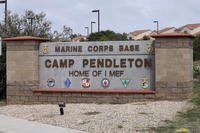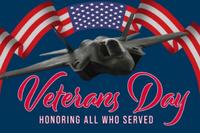HELMAND PROVINCE, Afghanistan — Marines and sailors with 3rd Platoon, Alpha Company, Combat Logistics Battalion 4, 1st Marine Logistics Group (Forward), provided sustained logistics support to Regimental Combat Team 6, north of Musa Qal’ah, May 27-June 11, in support of Operation Branding Iron.
The platoon transported supplies and equipment to and from a rearming, refueling and resupply point (R3P), as well as provided troop transport and vehicle recovery capabilities.
“Our role is to provide direct tactical logistics support to [2nd Battalion, 5th Marine Regiment, Regimental Combat Team 6] in support of their operations,” said Capt. Donald L. Hotchkiss, company commander, Alpha Co., CLB-4. “We provide a reach back capability to transport critical classes of supply and essential equipment in order for the battalion to continue sustained combat operations.”
Marines and sailors with 2nd Bn., 5th Marines used the R3P site to rest and refit during the operation.
“The R3P site serves as a forward supply point in immediate proximity to the forward lines of troops,” said 1st Lt. Benjamin Gutek, platoon commander, 3rd Plt., Alpha Co., CLB-4. “We were able to transport supplies … rapidly and accurately because we were in such close proximity."
This mission marks the first time during the deployment that CLB-4 dedicated an entire motor transportation platoon with internal command and control, security, and recovery capability, directly to an infantry battalion in support of a named operation, said Hotchkiss.
The CLB-4 Marines and sailors adjusted to change supply and equipment needs quickly to match operational requirements.
“The needs of the infantry consistently changed as the operation progressed and it is important for us to be flexible to meet their needs,” said Gutek.
The Alpha Co. Marines ensured they met the logistical support requirements of 2nd Battalion, 5th Marines. They overcame every obstacle to maintain a high tempo during the operation, said Gutek.
“[The mission] was taxing physically, mentally, emotionally and psychologically,” said Gutek. “We were operating between 12 and 16 hours during the movement, and once we reached the objective we had another three to four hours of offload before we could rest.”
The high operational tempo was maintained despite an increase in the improvised explosive device threat and stiff enemy resistance during the CLB-4 movements, said Gutek.
The Marines responded to the high-threat level in the area of operations by applying the fundamentals they first learned during combat training at the beginning of their careers.
“This mission gave the Marines a reality check, a reminder that they still need to retain and rely on the skills they learned in boot camp and [Marine Combat Training],” said Gutek. “This taught [the Marines] that they still need to maintain their basic field craft skills … such as finding creative ways to keep yourself clean, developing a reinforced fighting hole, familiarity with the crew served weapons systems, and establishing and maintaining a heightened security posture.”
The fighting holes, one of the examples of basic field craft skills that Marines utilized, were dug into the rocky ground of the R3P site and served to protect the Marines while they slept.
The temperature at the R3P site was another obstacle the Marines overcame.
“The hotter it is the more of a challenge it is to maintain your hygiene … and it is 120 plus degrees out here during the day, so people are sweating more and the dust starts coating everything,” said Sgt. Daniel B. Baker, loadmaster, 3rd Plt., Alpha Co., CLB-4. “If you don’t stay clean, you risk getting sick and once one person gets sick, it spreads because everyone is living in such tight quarters. When we start losing operators to sickness, it degrades our ability to achieve mission accomplishment.”
The direct support operation also marked the longest CLB-4 mission to date.
“Whether we plan for a three-day [combat logistics patrol] or a two-week support mission, the basics always apply,” said Hotchkiss. “The most important factor is engaged leadership, from the [non-commissioned officers] to the platoon commander, to ensure our Marines and sailors remain focused, remain disciplined and represent the battalion in a positive manner.”
The platoon accomplished their company commander’s goal of representing the battalion well by overcoming all of the challenges that arose during the operation to accomplish their mission, said Gutek.
“For the Marines and sailors participating in this operation, they see what the war fighter goes through on a daily basis,” said Hotchkiss. “The most important factor is the renewed energy they bring back to the Marines who have not had the opportunity to provide direct tactical logistics support to the forward lines of an operation.”

























